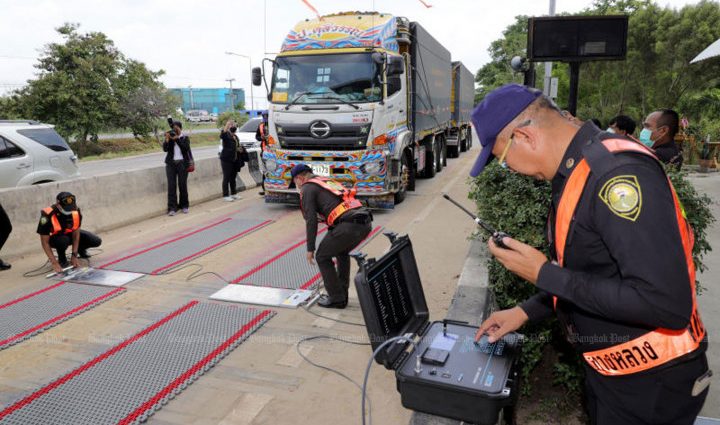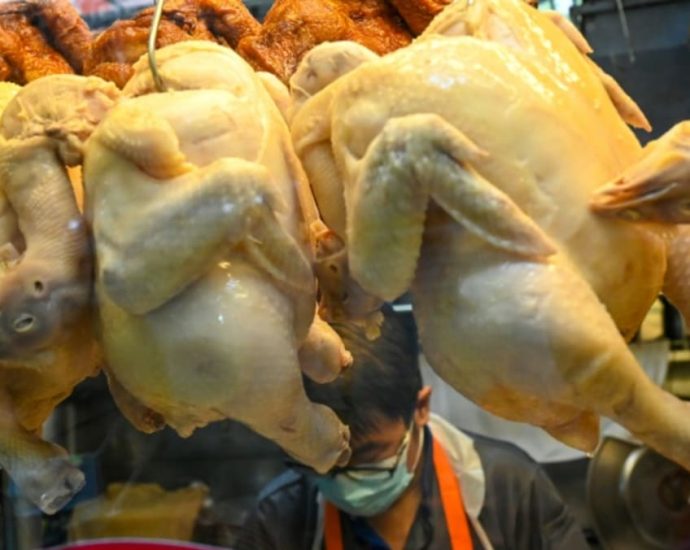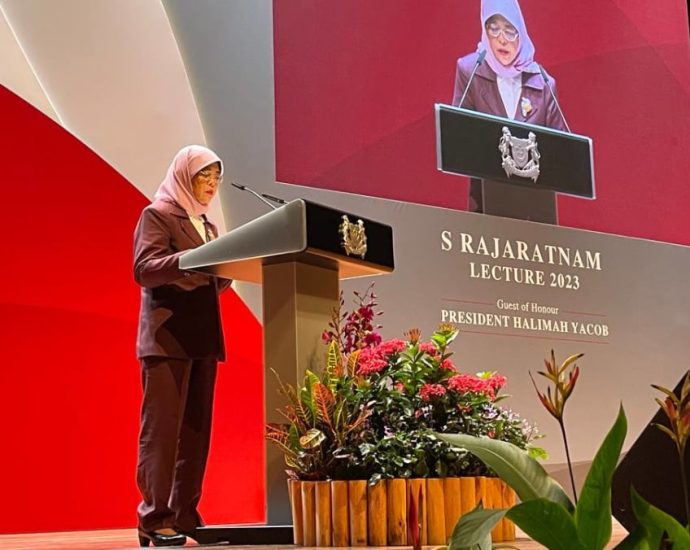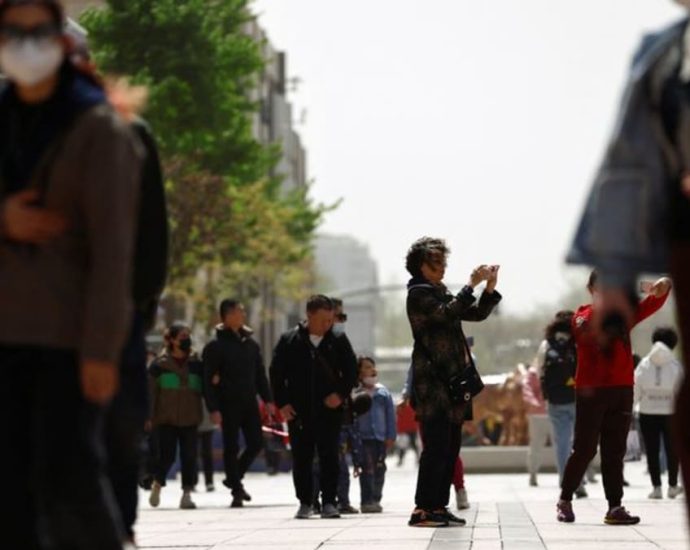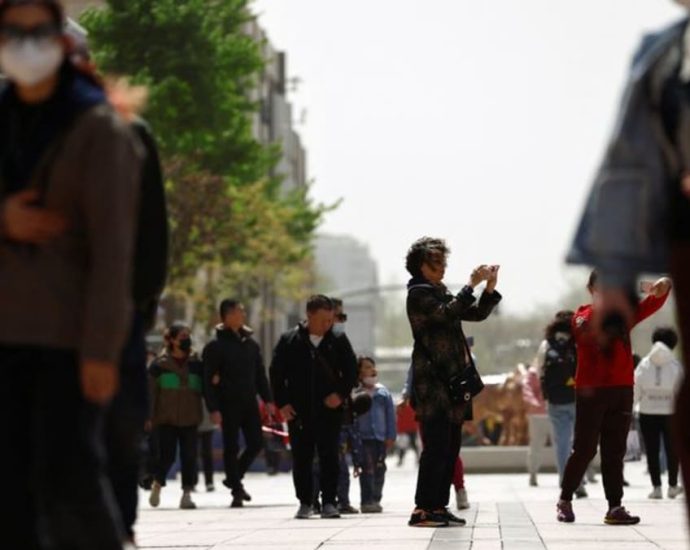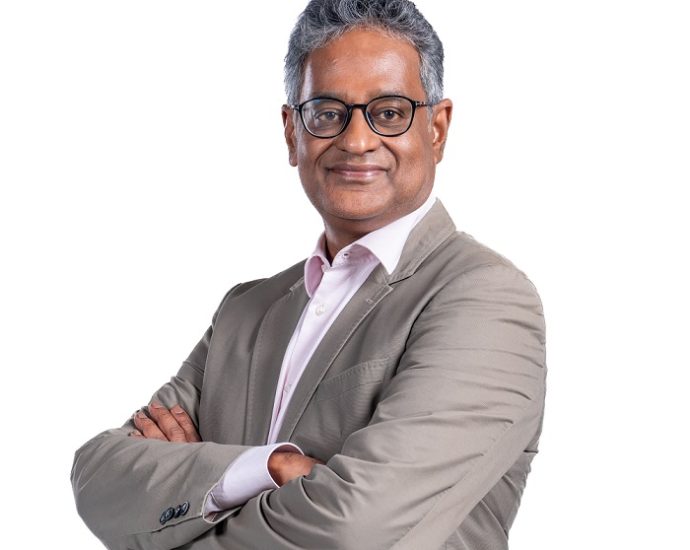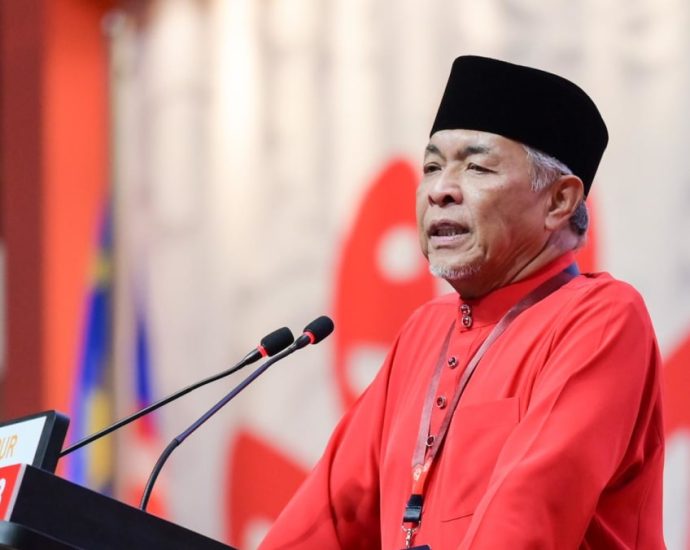40 highway police sidelined over bribery
Acting division chief says higher-ranking officers and officials from other agencies might also be involved

Forty highway police officers have been transferred for alleged involvement in the overloaded truck bribe-sticker scandal, as an anti-graft panel widens its investigation.
Those transferred include one deputy superintendent, 17 deputy inspectors and 22 non-commissioned officers. Of the total, 12 will face criminal action for taking bribes, said Pol Maj Gen Jaroonkiat Pankaew, commander of the Counter Corruption Division (CCD).
They will be sent to work at the Highway Police Division operations centre pending further action, said Pol Maj Gen Jaroonkiat, who has also been acting as head of the division since the transfer of its leader to an inactive post.
He said he believed more police and officials with higher ranks hight be involved, but they might be from other agencies. A working panel of the National Anti-Corruption Commission (NACC) will extend the investigation, he added.
The scandal, said to have been prevalent for 20 years or more, was first brought to light by Wiroj Lakkhanaadisorn, a Move Forward party list MP-elect. The outspoken politician said overloaded trucks with special stickers were not being detained, nor were their drivers ever arrested.
After the initial reports, Pol Maj Gen Ekkaraj Limsangkat, commander of the Highway Police Division, was transferred to an inactive post at the Central Investigation Bureau on May 30.

Apichart Prairungruang (left), head of the Land Transport Federation of Thailand, meets with Move Forward MP-elect Wiroj Lakkhanaadisorn (right) to discuss the truck sticker-bribery scandal at the party’s headquarters on June 1. (Photo: Somchai Poomlard)
A senior official of the Ministry of Transport admitted on Friday that there were loopholes in the system for regulating overloaded trucks.
The human factor — specifically, the use of discretion in determining which trucks to detain and which ones to let go — needed to be addressed, said Pisak Jitviriyavasin, the ministry’s deputy permanent secretary.
He said the ministry would focus on IT solutions to reduce human discretion and graft as much as possible. Longer-term, a body camera system should be adopted, he said after chairing a meeting of a ministry fact-finding panel on the bribery scandal.
He has instructed the Department of Highways and the Department of Rural Rods to consider the use of body cameras by officers and plans to raise the issue for discussion at the next meeting on June 20.
The Department of Highways operates 97 permanent checkpoints for weighing vehicles and the Department of Rural Roads has five.
The ministry would take disciplinary action against officials found involved in taking bribes from operators of overloaded trucks, Mr Pisak added.
Jirapong Theppitak, deputy director-general of the Department of Highways, said the department had set up two working panels. One will look into alleged wrongdoing involving officials and the other will inspect weighing stations in a bid to improve efficiency.
The Land Transport Federation of Thailand would be invited to give information to the department about alleged bribe-taking involving department officials, he added.

A sticker indicating a bribe has been paid is seen on the windscreen of an overloaded truck. (Twitter: @Wirojlak)
E. coli in chicken rice? Stalls are subject to more stringent checks, says SFA

SINGAPORE: Chicken rice stalls are subject to more stringent and frequent checks as the dish poses higher food safety risks, the Singapore Food Agency (SFA) said on Friday (Jun 9).
The agency was responding to CNA’s queries about a YouTube video saying that nearly half of 100 chicken rice samples tested in a lab were found to have exceeded Singapore’s regulatory limits for E. coli bacteria.
A common preparation method for the dish involves boiling the chicken before placing it in cold water, which means the meat may be undercooked.
The chickens are also often displayed at room temperature for hours, where bacteria that survived the cooking process may continue to grow.
“When chickens are sliced to serve, cross-contamination could occur from handling meat or through the chopping boards and other surfaces,” SFA said.
SFA said it looks into public feedback and monitors food stalls by collecting samples and testing them for microbiological contamination to ensure food safety requirements are met.
The agency received 126 instances of feedback on chicken rice stalls from 2020 to May this year. It took enforcement action against one stall.
“In addition, enforcement actions were taken against 22 other chicken rice stalls found to fail our standards under SFA’s Market Monitoring Programme,” the agency said, adding that the rate of failure due to E. coli detection in chicken rice samples has decreased in recent years.
Nearly 40 per cent of chicken rice samples tested in 2021 exceeded the regulatory limit for E. coli bacteria in ready-to-eat food, according to SFA’s website. In 2022, that figure was 13 per cent. Pathogens were only found in 0.9 per cent of chicken rice samples in both years.
“There has been no reported foodborne illness cases involving chicken rice since 2020,” SFA said.
Most strains of E. coli do not cause illnesses. It is commonly used as an indicator of safety because the presence of high levels of the bacteria is linked to poor hygiene, cross-contamination, poor storage practices and insufficient cooking.
SFA said it will continue to remind chicken rice stallholders about food safety practices.
E. COLI IN CHICKEN RICE SAMPLES
YouTuber Angel Hsu posted a video on Jun 3 about visiting 100 chicken rice stalls to find the best one. But she also bought an additional packet that was sealed in a food-grade bag and put in an ice box before being sent to a lab for testing.
All components of the chicken rice packet including the chilli, cucumber and garnish were tested in the laboratory, Ms Hsu said in response to queries.
According to data she shared online, 45 stalls had E. coli bacteria exceeding SFA’s limit of 100 colony-forming units per gram (cfu/g). Four stalls had a reading of more than 490,000 cfu/g, which is the upper limit of the lab’s machine.
Ms Hsu, who used to work in a microbiology lab, said she had diarrhoea and stomachaches every day while filming the video but did not take any tests to determine if she had a bacterial infection.
She told CNA she made the video to show tourists that there are many good chicken rice stalls in Singapore beyond the famous ones.
“Also, my university professor used to mention that steamed chicken is the best medium for bacteria growth hence this video idea came about,” she said.
Medical doctor Leslie Tay, who also runs popular food blog ieatishootipost, said he commends Ms Hsu’s effort but pointed out that some places may have a lower bacterial count because they were sampled right after the chicken was cooked.
“The longer the chicken hangs at room temperature, the higher the risk,” he wrote on Facebook, advising readers to eat chicken rice for lunch instead of dinner.
But he added that high E. coli counts do not always lead to outbreaks because only a few strains cause serious illness.
‘Strong Singapore core’ crucial against external influences that seek to divide the country: President Halimah

SINGAPORE: A strong Singapore core is crucial to guard against external influences that seek to divide the country, President Halimah Yacob said on Friday (Jun 9) at the S Rajaratnam Lecture.
The event, organised by the Ministry of Foreign Affairs, is held every two years and touches on matters of diplomacy.
Speaking to an audience of more than 800 that included public officers, diplomats and academics, Madam Halimah said natural fault lines in a society like Singapore can easily be exploited.
“Disinformation and misinformation can spread easily in an open and digitally connected country, through social media and instant messaging applications,” she said.
“We must be discerning enough to call out half-truths or one-sided views peddled on social media that are packaged as news.”
Beyond legislation to tackle falsehoods, people must be sceptical of what they read and reflect on who might stand to benefit from it, she added.
Mdm Halimah’s lecture comes two weeks after she announced that she would not run for a second term in the upcoming Presidential Election. Her term ends on Sep 13.
Senior Minister Tharman Shanmugaratnam is the first person to state publicly that he intends to run for the presidency.
STRENGTHENING DOMESTIC RESILIENCE
Amid a troubling external environment, Singapore’s unity as a nation and its resolve to stand together is even more critical, said Mdm Halimah.
Pointing to COVID-19, she said the pandemic underscored the importance of resilience.
“Singapore was successful in managing the pandemic because Singaporeans trusted the government,” she said.
“Our people closed ranks and played their part to keep each other safe by complying with safe management measures,” she said, adding that the country’s robust healthcare system and safety nets built over many years also made a crucial difference.
While strengthening resilience and trust within society will allow the country to respond nimbly in an increasingly uncertain external environment, Mdm Halimah noted that there will be challenges as society matures.
To build resilience, she said it is essential for all Singaporeans to feel that they have a stake in its future, adding that this is the main purpose of the Forward Singapore exercise.
The year-long exercise, which aims to “review and refresh Singapore’s social compact”, was launched by Deputy Prime Minister Lawrence Wong in June 2022.
In addition to maintaining the trust of the population, Mdm Halimah said the public service and the government must also continually work towards a society that is fair and inclusive, and which is able to adapt to changing circumstances.
“This means re-examining fundamentals to ensure that our system of meritocracy does not result in an entrenchment of privileges and advantages,” she said, noting that it is important to continue investing in education and skills training.
She also urged people to be proactive in finding common ground with others.
“We must remember that our diversity as a multiracial and multireligious society is our strength. We must protect this,” she said.
Indonesia’s Anak Krakatau volcano erupts twice, spewing big ash cloud
JAKARTA: Indonesia’s Anak Krakatau volcano erupted twice in just over one hour on Friday (Jun 9), spewing volcanic ash as high as 3,000m into the air, according to country’s volcanology agency. The volcano erupted at 7.46am local time (12.46am GMT) on Friday then again 62 minutes later. Time-lapse images sharedContinue Reading
China issues draft guidelines to tackle online bullying
BEIJING: China is canvassing public opinion on draft guidelines to punish cyber violence, authorities said on Friday (Jun 9), as concern grows over online bullying and attacks targeting women and children in the world’s largest internet community. Cyber violence, unlike traditional crimes, often aims at strangers so that victims faceContinue Reading
China issues draft guidelines to tackle online abuse
BEIJING: China is canvassing public opinion on draft guidelines to punish cyber violence, authorities said on Friday (Jun 9), as concern grows over online bullying and attacks targeting women and children in the world’s largest internet community. The guidelines were drafted jointly by bodies including the Ministery of Public SecurityContinue Reading
As haze beckons, Malaysia wants its plantation firms in Indonesia to formally report forest fire measures

Transboundary haze has sometimes become a flashpoint for ASEAN countries.
In 2019, Indonesia said some forest fires in its territory had started on land used by subsidiaries of Malaysian companies, as the neighbours traded blame for blazes that spread haze across the region.
“It will definitely be good for the plantation companies to illustrate that we are playing our part,” Mr Nik Nazmi said on Friday, noting that these are big, listed players who want to be seen as “doing the right thing”.
The minister said he has received reports from such companies before, but is looking at “institutionalising” it with the Malaysian stock exchange. When asked if this means putting it into law, he said the government will have to work out the “best” way.
“We want greater transparency, because with transparency comes accountability … So through that, rather than a punitive approach … transparency is how we see it is best to deal with (the issue),” he added.
Despite that, Mr Nik Nazmi said Malaysia is still considering whether to move with a law to penalise local companies that burn their Indonesian plantations and cause haze in Malaysia.
Farmers usually take advantage of dry conditions to burn and clear the land of vegetation in preparation for crop cultivation.
The law, drafted during the Mahathir Mohamad administration in 2019, has been shelved by previous governments.
Singapore has introduced its own Transboundary Haze Pollution Act and in 2015 investigated four Indonesian companies in relation to causing or condoning fires that resulted in unhealthy levels of haze in Singapore.
But the law has produced no prosecutions amid difficulties in obtaining evidence in other jurisdictions.
“We want to see how effective it is. For example, in the Singapore experience, how many prosecutions, how many were successful and all that,” Mr Nik Nazmi said.
“For us, it has to go beyond having a symbolic legislation. So, we will look at it through a very broad lens.”
In the bigger picture, Mr Nik Nazmi said the ASEAN members he met agreed to play their part in tackling transboundary haze.
“We were all committed that if anything happens, we will all assist one another. We won’t just say: ‘Oh, this is an Indonesian problem, Singaporean problem or Malaysian problem,’” he said.
“But where we can and where is needed, the assistance within the ASEAN family will be given to deal with this issue. So … we are in it together.”
Mr Nik Nazmi said ASEAN has also made “good progress” on sharing weather data and monitoring resources to propose a “very powerful” approach in fighting haze, pollution and forest fires.
This includes countries sharing data from their respective weather stations and geological departments to conduct weather surveys, he said.
“Now with all the big data technologies that are coming into play, sharing of data will be very crucial,” said Mr Nik Nazmi.
“Moving forward as we go towards El Nino and all that, we really have to ensure that this cooperation is being built upon, so that we can face even the worst possibilities.”
El Nino is expected to bring about reduced rainfall and a higher risk of haze in the region, and Singapore last month advised people to prepare N95 face masks and air purifiers.
Mr Nik Nazmi said on Friday that Malaysia has not gotten “to that level yet”, although authorities continue to monitor the situation. Potential measures include N95 masks, postponing outdoor activities and increasing hydration, he said.
“The plan is already there, but we will obviously monitor which stage of the situation we are at before we make the necessary announcements,” he added.
Why are Digital Exports important for the Digital Economy?
Entrepreneurial approach adopted by MDEC to building out global networks
Provide founders a support system that understands challenges they face
Malaysia Digital Economy Corporation (MDEC), an agency operating under the Ministry of Communications and Digital, stands at the forefront of Malaysia’s digital economy development. Its paramount mission is to empower businesses and propel…Continue Reading
UMNO has not wavered in its stance to defend Malay, Islam issues: Party president Ahmad Zahid
KUALA LUMPUR: United Malays National Organisation (UMNO) president Ahmad Zahid Hamidi on Friday (Jun 9) said that the party has never wavered from its stance of championing the rights of the Malays, Bumiputera as well as defending the sanctity of Islam in the country. He also stressed that UMNOContinue Reading
Lancet study: More than 100 million people in India diabetic
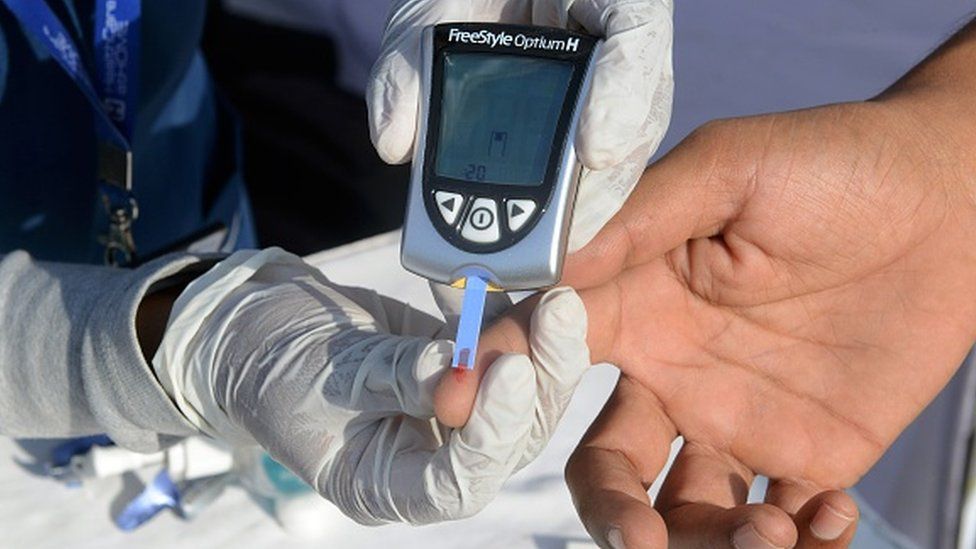 Getty Images
Getty ImagesA new study published in Lancet has found that 101 million people in India – 11.4% of the country’s population – are living with diabetes.
The study commissioned by the health ministry also found that 136 million people – or 15.3% of the people – were living with pre-diabetes.
Diabetes is a disorder in which the pancreas is unable to produce insulin.
It is characterised by uncontrolled high blood glucose levels and it can be controlled by injecting insulin.
The latest study, published in The Lancet Diabetes and Endocrinology, is considered to be the first to comprehensively cover every state to assess the country’s burden of non-communicable diseases.
Researchers said they found that the prevalence of diabetes in India’s population was much higher than previously estimated. The WHO had estimated 77 million people suffering from diabetes, and nearly 25 million were pre-diabetics, at a higher risk of developing diabetes in near future.
“It is a ticking time bomb,” Dr RM Anjana, lead author of the study and managing director at Dr Mohan’s Diabetes Specialities Centre, told The Indian Express newspaper.
“If you have pre-diabetes, conversion to diabetes is very, very fast in our population; more than 60% of people with pre-diabetes end up converting to diabetes in the next five years,” she said.
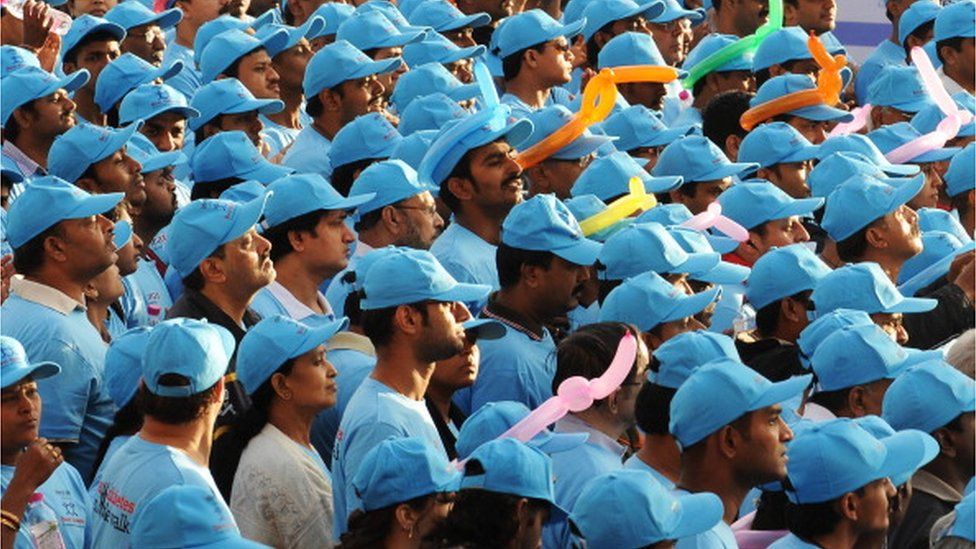
The decade-long study was conducted by the Madras Diabetes Research Foundation with the Indian Council of Medical Research (ICMR) and involved 113,000 participants over the age of 20 from every state in India.
Data collected in 2008 was extrapolated for 2021 using demographics in the latest National Family Health Survey, the most comprehensive household survey of health and social indicators by the government.
The highest prevalence of diabetes was observed in Goa (26.4%), Puducherry (26.3%) and Kerala (25.5%).
The study warned of a sharp rise in diabetes in states like Uttar Pradesh, Madhya Pradesh, Bihar and Arunachal Pradesh where the prevalence was lower.
Also diabetes was more frequent in urban than rural areas, the study found.
Diabetes affects about one in 11 adults worldwide and increases the risk of heart attack, stroke, blindness, kidney failure and limb amputation.
It is normally split into type 1 and type 2.
Type 1 diabetes is a disease of the immune system. It errantly attacks the body’s insulin factories (beta-cells) so there is not enough of the hormone to control blood sugar levels.
Type 2 diabetes is largely seen as a disease of poor lifestyle as body fat can affect the way the insulin works.
BBC News India is now on YouTube. Click here to subscribe and watch our documentaries, explainers and features.

Read more India stories from the BBC:
- The divisive debate over California’s anti-caste bill
- Delhi: The city where it is dangerous to breathe
- Why it took 42 years to convict a 90-year-old in India
- Haunting images of deadly India train crash in 2002
- How did three trains collide in India?
- ‘My mother was missing, I got a picture of the body’

